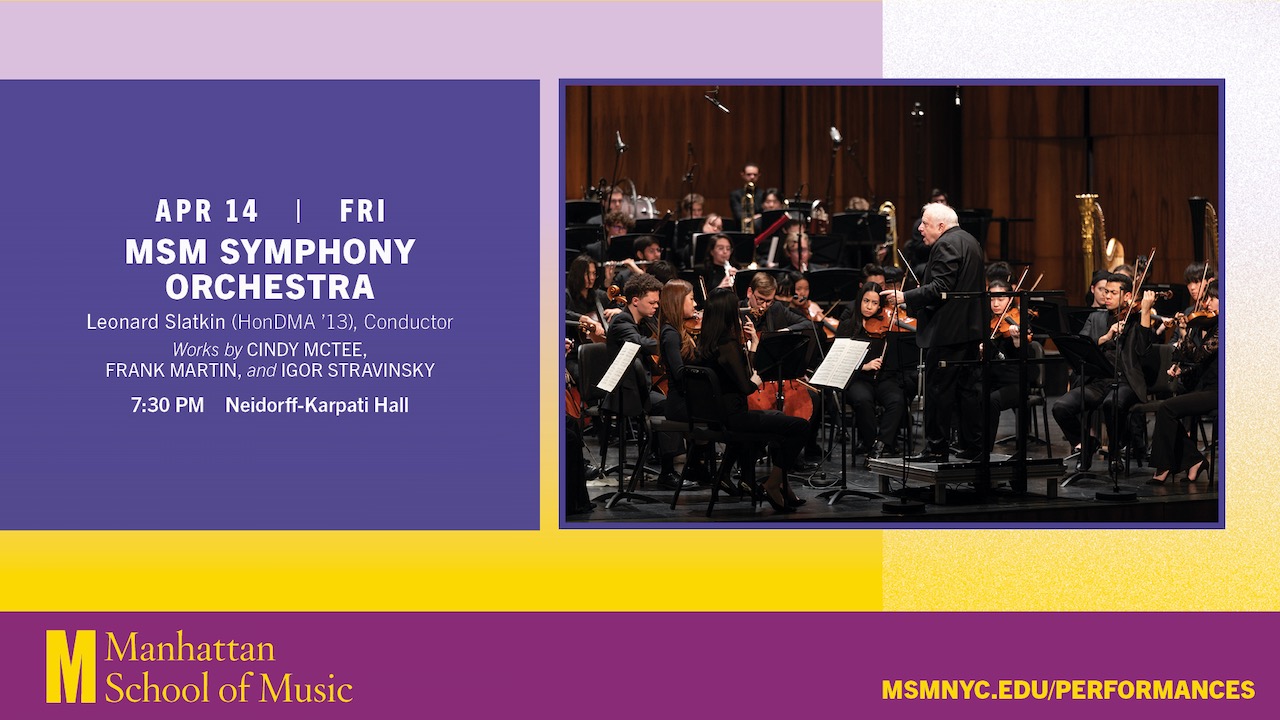Maestro Leonard Slatkin (Hon DMA ’13, MSM trustee) returns to Neidorff-Karpati Hall on April 14 at 7:30 PM to conduct the MSM Symphony Orchestra in a performance of Igor Stravinsky’s The Rite of Spring.
We spotlight several MSM students taking part in the concert who explain why they’re excited to be playing Stravinsky’s most famous work, considered a cornerstone of orchestral repertoire.
The concert also features Cindy McTee’s Timepiece and Frank Martin’s Concerto for 7 Winds.
Zach Masri (MM ’23)
Orchestral Percussion
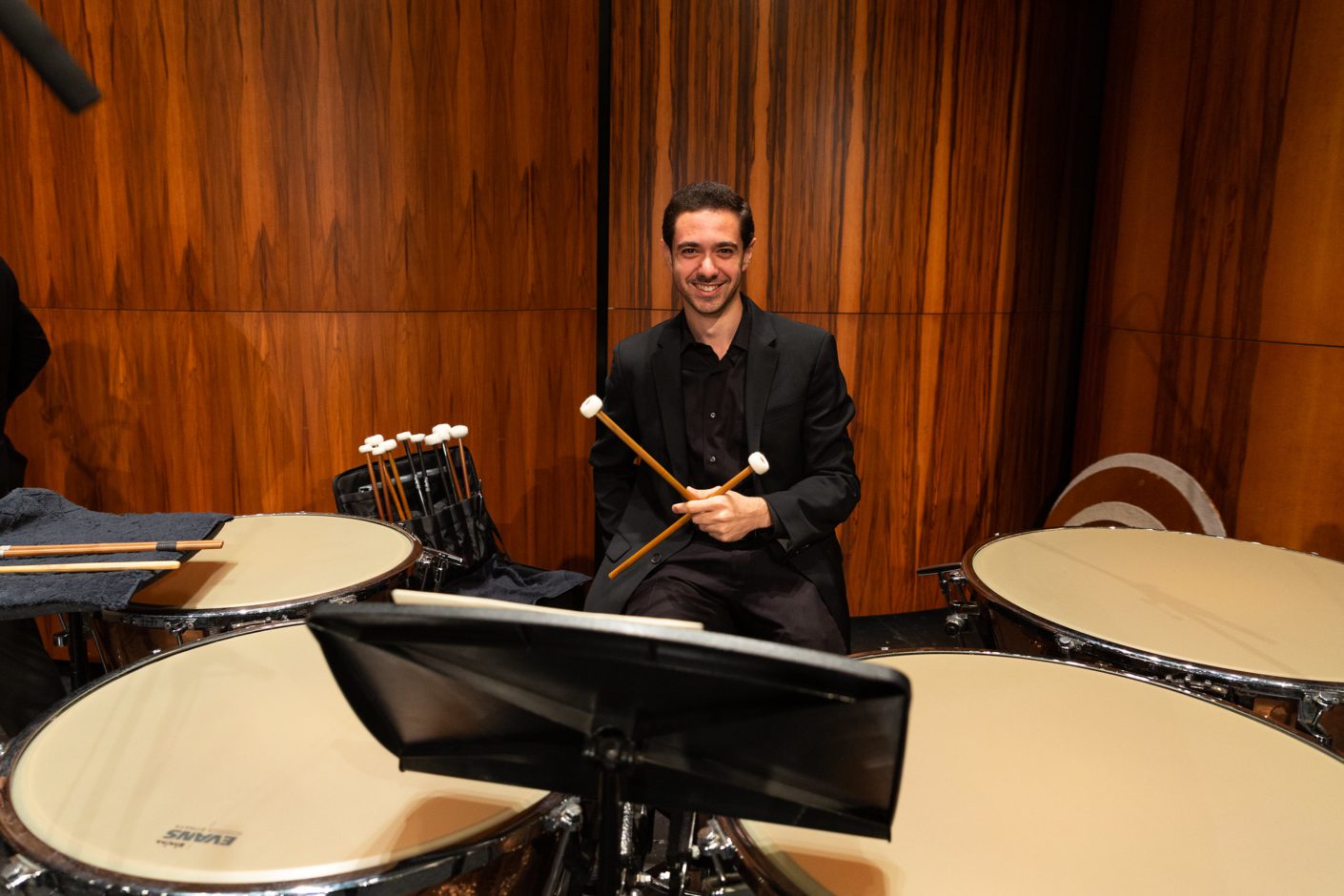
“The Rite of Spring holds a special place in my heart because of a profound personal experience: during my undergraduate studies, I had the privilege of playing the 2nd Timpani part with a master’s student whom I regarded as a mentor. Collaborating with her was an inspiring experience that deepened my understanding of what it means to be a timpanist in an orchestra. I am incredibly grateful to now have the chance to play the 1st Timpani part as a master’s student, alongside a remarkable undergraduate student whom I deeply respect and admire.”
Zach Masri (MM ’23)
Orchestral Percussion
Hometown: Vancouver, Canada
Student of Christopher Lamb
Josh Owens (MM ’23)
Classical Oboe
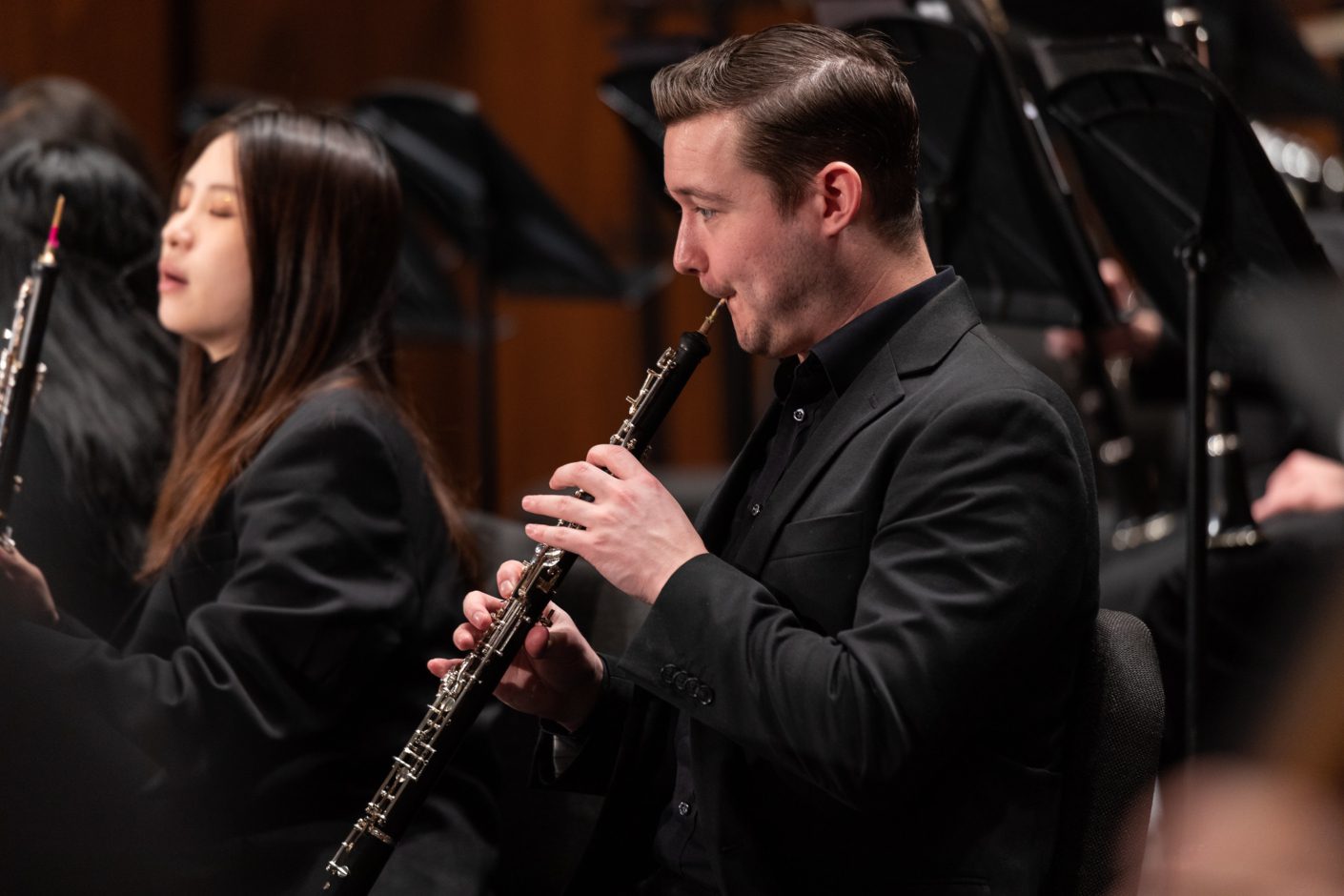
“I am excited to perform Stravinsky’s The Rite of Spring because of how deeply important the piece is to the repertoire. The immense task of piecing together this intricate work while maintaining complete control of the nuances in one’s individual part is almost a ‘rite of passage’ for classical musicians around the world. Any piece of art that incites a riot at its premier yet remains solidly in the core repertoire must be powerful enough to necessitate its startling voice be experienced by audiences in 2023.”
Josh Owens (MM ’23)
Classical Oboe
Hometown: Austin, Texas
Student of James Austin Smith
Jihyeon Kim (MM ’23)
Classical Violin, Concertmaster

“I am so excited to play Stravinsky’s The Rite of Spring! I had never heard anything like it in rhythm, stress, and tonality. It was groundbreaking. The rhythms of it are so elemental. At the end, you just have to dance!”
Jihyeon Kim (MM ’23)
Classical Violin, Concertmaster
Hometown: Wonju, South Korea
Student of Pinchas Zukerman
Sterling Davis (MM ’24)
Orchestral Trombone
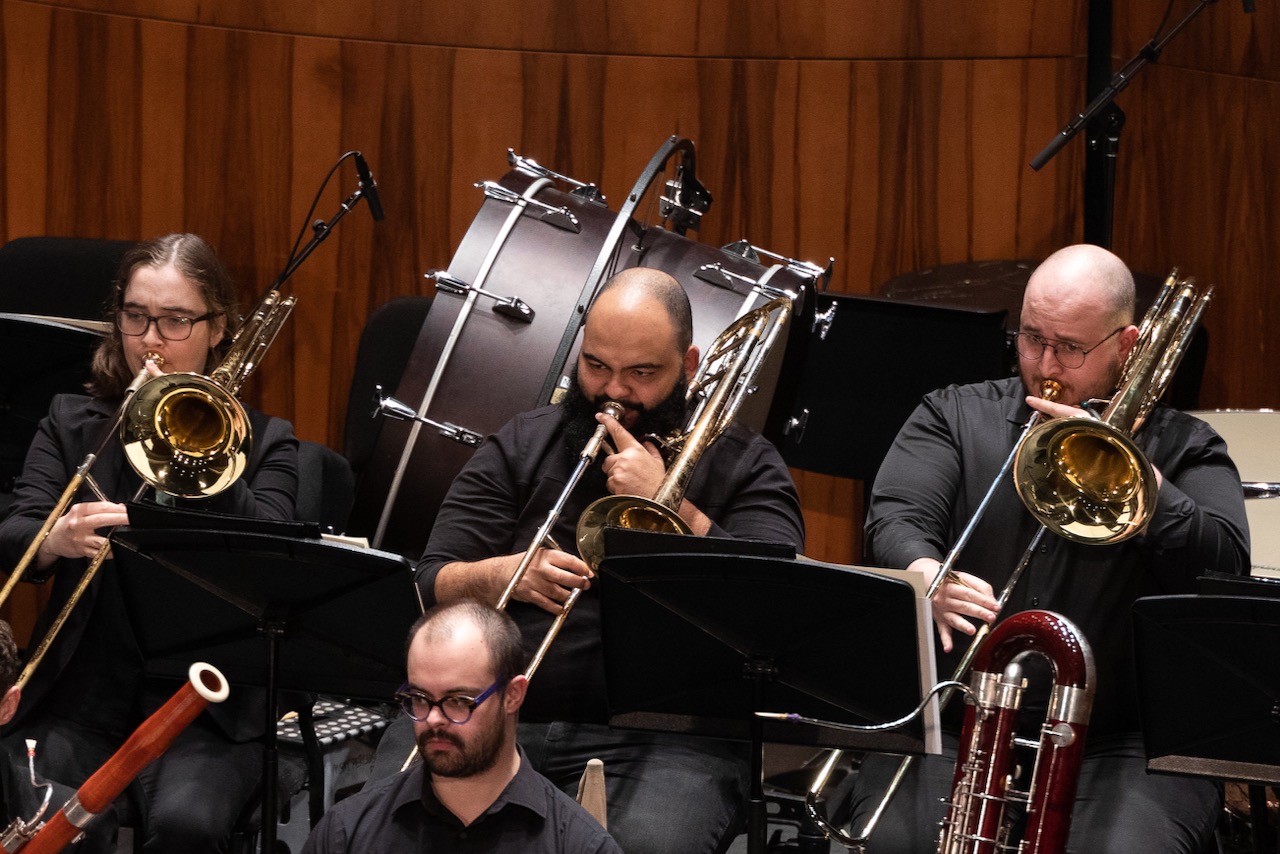
“The Rite of Spring has always been on my musical bucket list – it’s something I’ve always wanted to play! Throughout my education, I’ve learned so much about Stravinsky and the importance of this specific piece to classical music. It’s a full-circle moment to get to sit down and work on it, especially with my incredible colleagues at MSM and Maestro Slatkin.”
Sterling Davis (MM ’24), in photo above, in middle
Orchestral Trombone
Hometown: Woodside, New York
Student of Collin Williams
“The immense task of piecing together this intricate work, while maintaining complete control of the nuances in one’s individual part, is almost a ‘rite of passage’ for classical musicians around the world.”
Rahel Lulseged (MM ’24)
Orchestral Cello
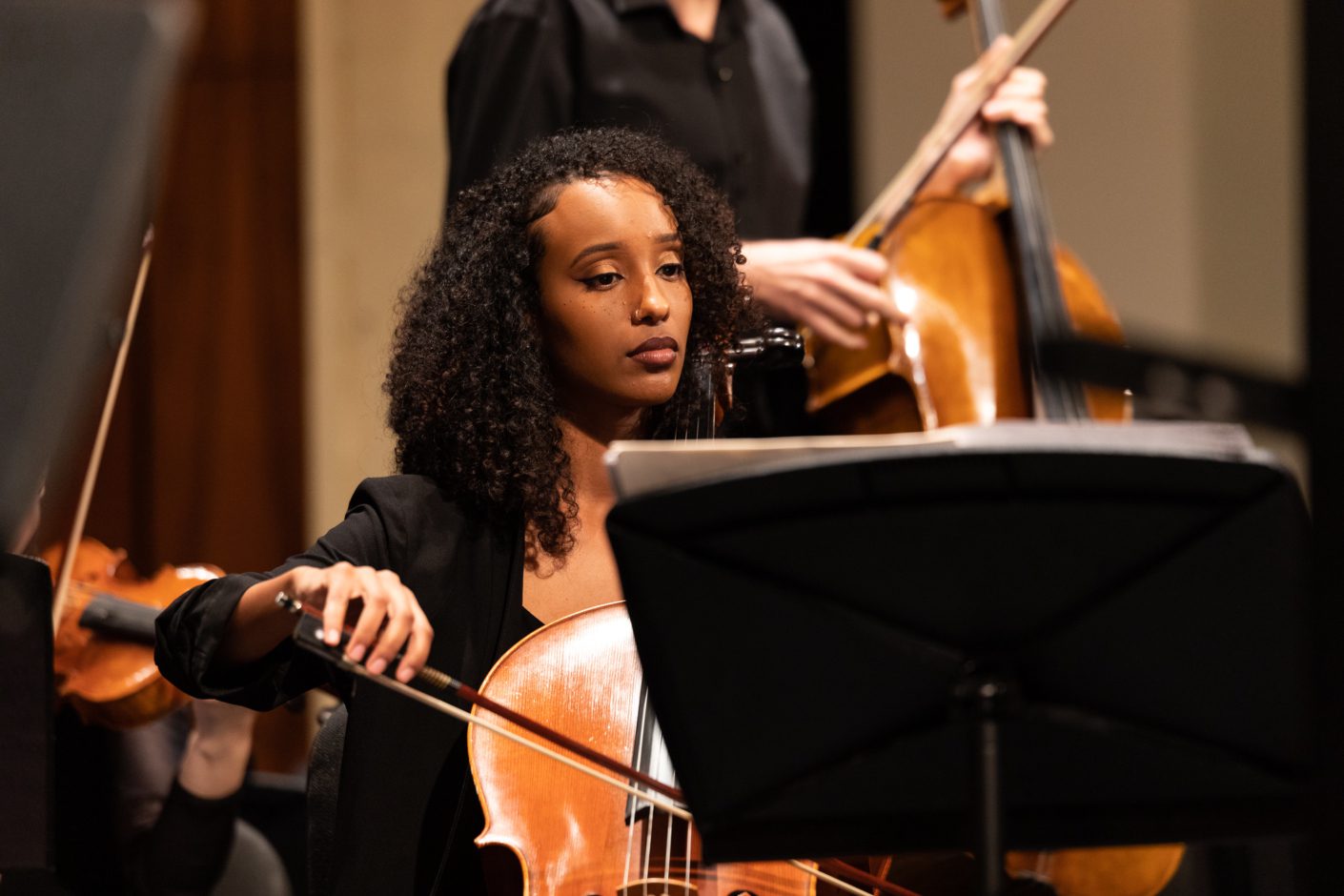
“The Rite of Spring is considered one of the giants in the orchestral repertoire, so it’s exciting to be able to tackle it for the first time with my friends in the orchestra! Also, who wouldn’t look forward to playing the iconic ‘mchum, chum, chum, chum, chum, CHUM, chum, CHUM’ passage.”
Rahel Lulseged (MM ’24)
Orchestral Cello
Hometown: Richardson, Texas
Student of Alan Stepansky
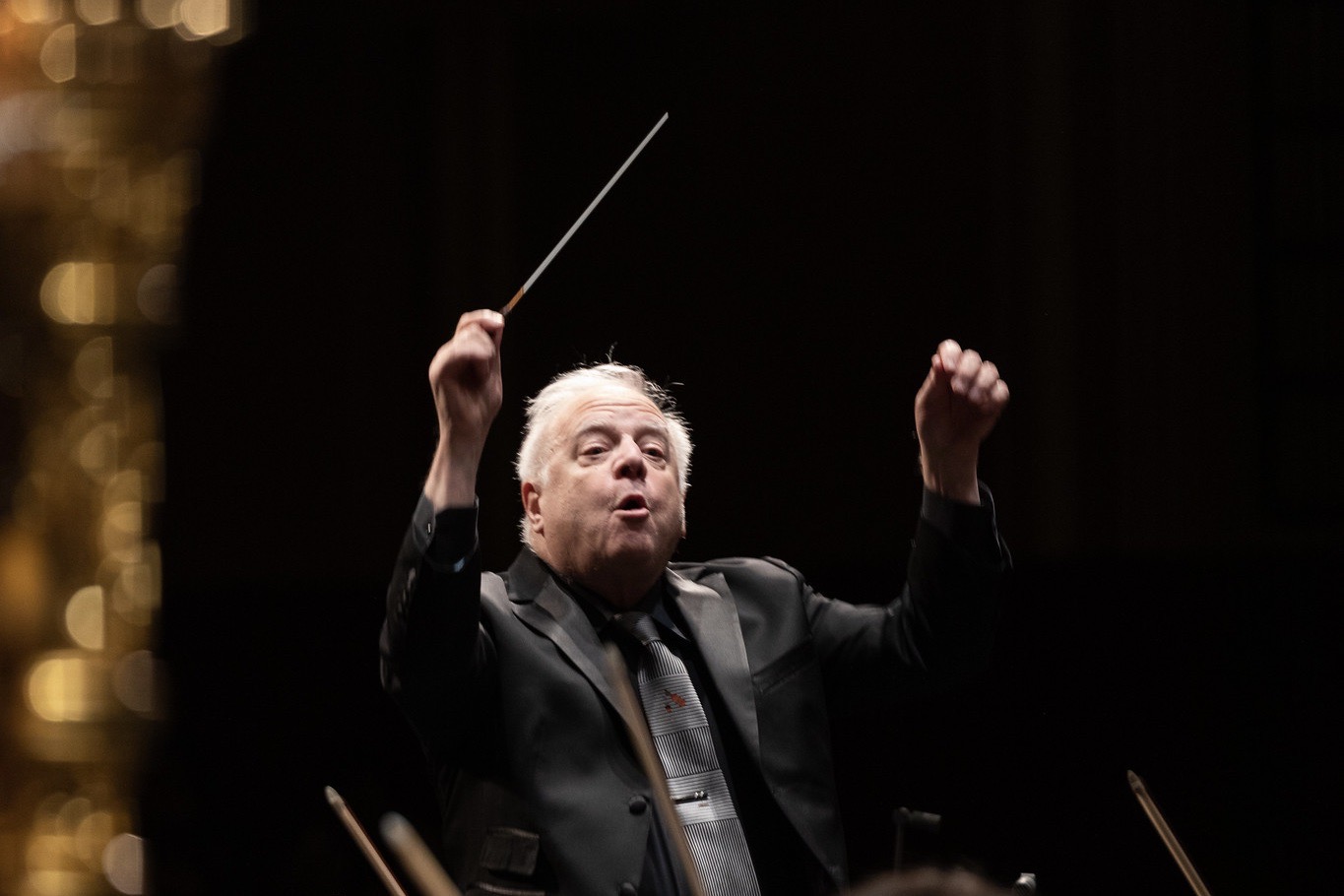
Leonard Slatkin (HonDMA '13, MSM trustee) conducts the MSM Symphony Orchestra, February 2023
ABOUT IGOR STRAVINSKY’S THE RITE OF SPRING
The Rite of Spring premiered at the Théâtre des Champs-Élysées on May 29, 1913. The piece was commissioned by Ballet Russes for the 1913 Paris Season and was choreographed by Vaslav Nijinsky.
One of the most famous opening nights in all of music history, the eccentric rhythms, harsh dissonance, and overall avant-garde nature of the piece outraged the audience. Some attendees stormed out, others shouted so loud the dancers had a hard time hearing the orchestra for their cues. Despite the initial reaction from the crowd, The Rite of Spring is considered one of the most important and influential pieces of the 20th century.
The Rite of Spring is split up into two parts, The Adoration of the Earth and The Great Sacrifice. Stravinksy described The Rite of Spring as “a musical-choreographic work, representing pagan Russia…unified by a single idea: the mystery and great surge of the creative power of Spring”.
